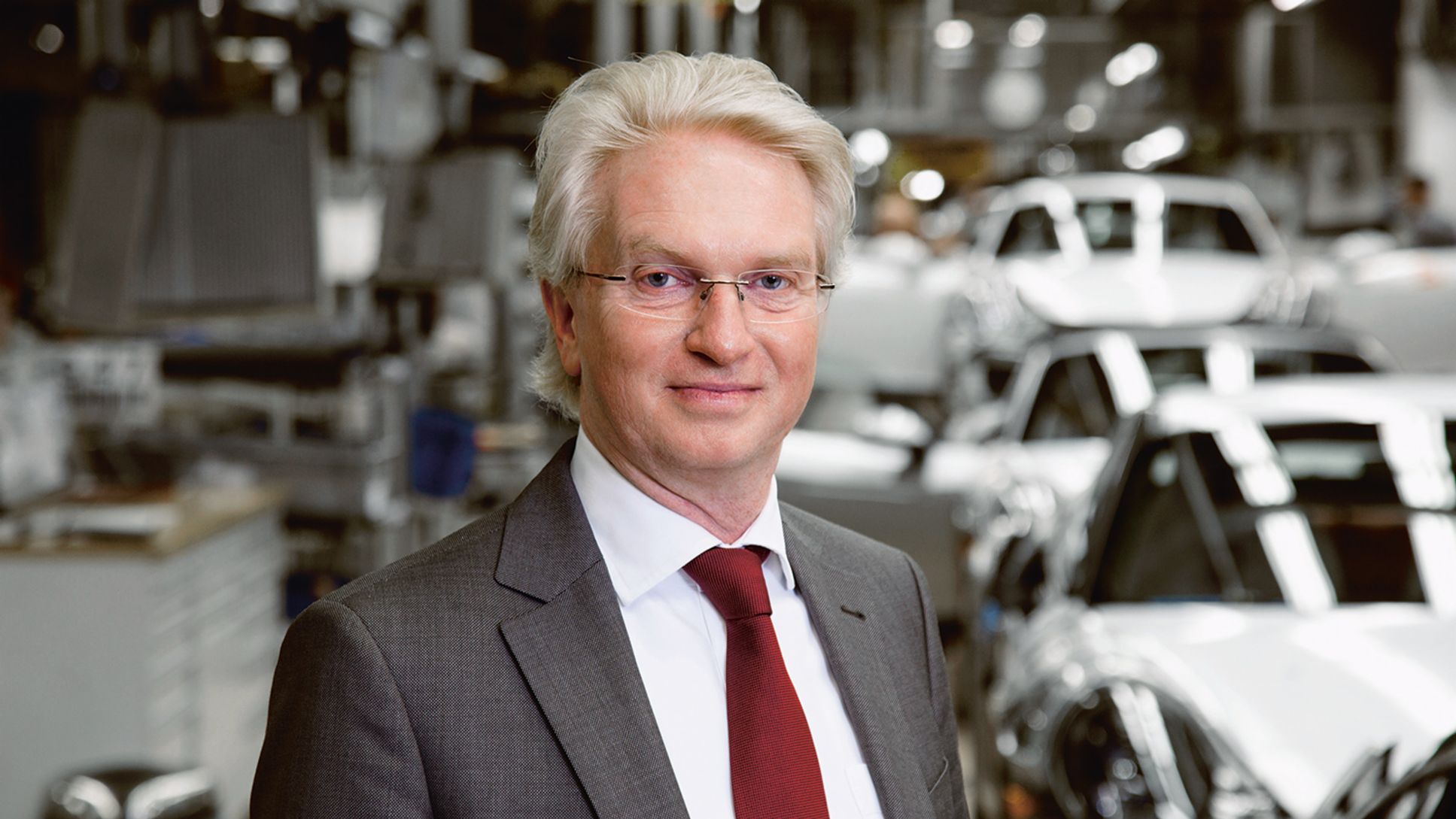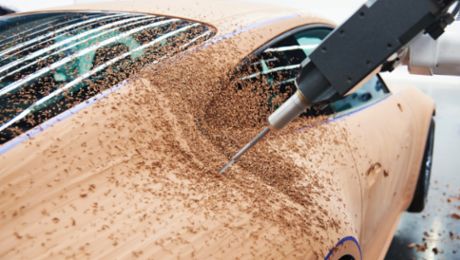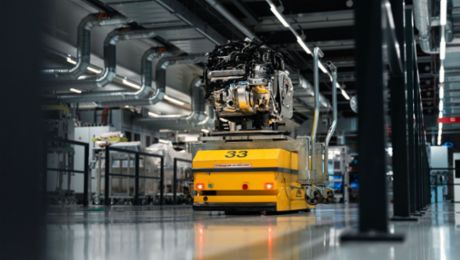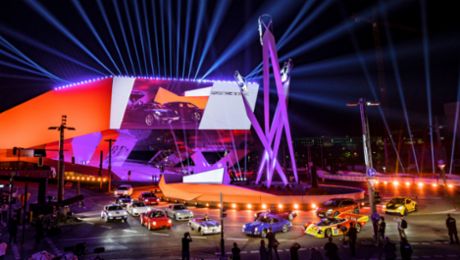Mr Reiß, the main Porsche plant combines tradition and innovation. What in your opinion are the main characteristic features of production in Zuffenhausen?
Today, we are one of the most efficient sports car manufacturers in the world. That wasn't always the case. At the beginning of the 1990s, our production processes were mainly based on artisanship. During the ensuing crisis, we completely revamped our entire production. We produce in a pearl chain, in other words, we define the sequence of cars to be built six days in advance and maintain this throughout all the production stages. Every car that rolls off the assembly line in Zuffenhausen is manufactured to the customer's requirements. No sports car is identical to the other. The Boxster, 911 coupé or convertible, Cup car – all these models are produced on a single line. We can therefore cover a very large number of variations. However, to manage the complexity that this involves, we need highly qualified and flexible workers. Whether they are assigned to the body shop, paint shop or the assembly line, our skilled workers are capable of performing the work contents for every single car model.
As opposed to Leipzig, for example, the main plant is not located on green fields. What challenges does this place on you and your team?
Zuffenhausen has structures that have evolved over time and is physically bordered by streets, railway tracks and adjacent plots. As a result, we cannot expand the surface area of our production facilities and must instead split production across several storeys. We need the most intelligent solutions to remain "best in class". So, among other things, we built bridges between the body shop, the new paint shop and the assembly line. Hence, our production lines do not even stop at streets.
Production in Zuffenhausen is a symbol of the "Porsche legend". What does this legend mean for you?
On the one hand the product of course, with its characteristic features – for example the rev counter located in the middle, the ignition lock on the left and of course the unmistakable silhouette. All these features are continued throughout the Porsche product portfolio. A typical example of the "Porsche legend" in my view is the 911 Targa – a classic car, which was transposed to the modern era and has the latest technologies on board. Then add to this the pride of our workers who continuously extend their qualifications in order to implement these innovative technologies. Meanwhile, up to 80 control units are fitted to our cars. Therefore, I think it's fair to say that the soul of Porsche is our workforce.
But still the main plant is no island of paradise and must face increasing competition from other sites in a globalised world. Why will Porsche continue producing sports cars in Zuffenhausen in future?
Because we managed to continuously question and optimise our production processes. To ensure the competitiveness of the site, we involve our employees in the organisation of work processes. This is the way we can improve our productivity. We are firmly convinced that – as Ferry Porsche once said – the last car ever built will be a sports car. We will do our utmost to make sure it rolls off the line in Zuffenhausen.
What are the next important milestones for you and your colleagues?
First we want to secure the site for the long term. In future, we will therefore manufacture all of our two-door sports cars in Zuffenhausen. One of the main milestones is to plan and build the new body shop. Then another important item is to produce a modern working environment for our plant. The workforce is getting older. For this reason, we are considering how we can improve the design of production workplaces to make them even more ergonomic. We will also push forward with the modernisation of existing production structures. In general, I am totally convinced that together with our team we will achieve our targets in the Porsche 2018 Strategy.
Consumption data
911: Combined fuel consumption: 9,0 – 8,2 l/100 km; CO₂ emissions: 211 – 191 g/km
911 Carrera Cabriolet: Combined fuel consumption: 9,2 – 8,4 l/100 km; CO₂ emissions: 216 – 195 g/km
911 Targa 4: Combined fuel consumption: 9,5 – 8,7 l/100 km; CO₂ emissions: 223 – 204 g/km
911 Targa 4S: Combined fuel consumption: 10,0 – 9,2 l/100 km; CO₂ emissions: 237 – 214 g/km
911 Targa 4 GTS: Combined fuel consumption: 10,0 – 9,2 l/100 km; CO₂ emissions: 237 – 214 g/km
Boxster: Combined fuel consumption: 8,4 – 7,9 l/100 km; CO₂ emissions: 195 – 183 g/km



